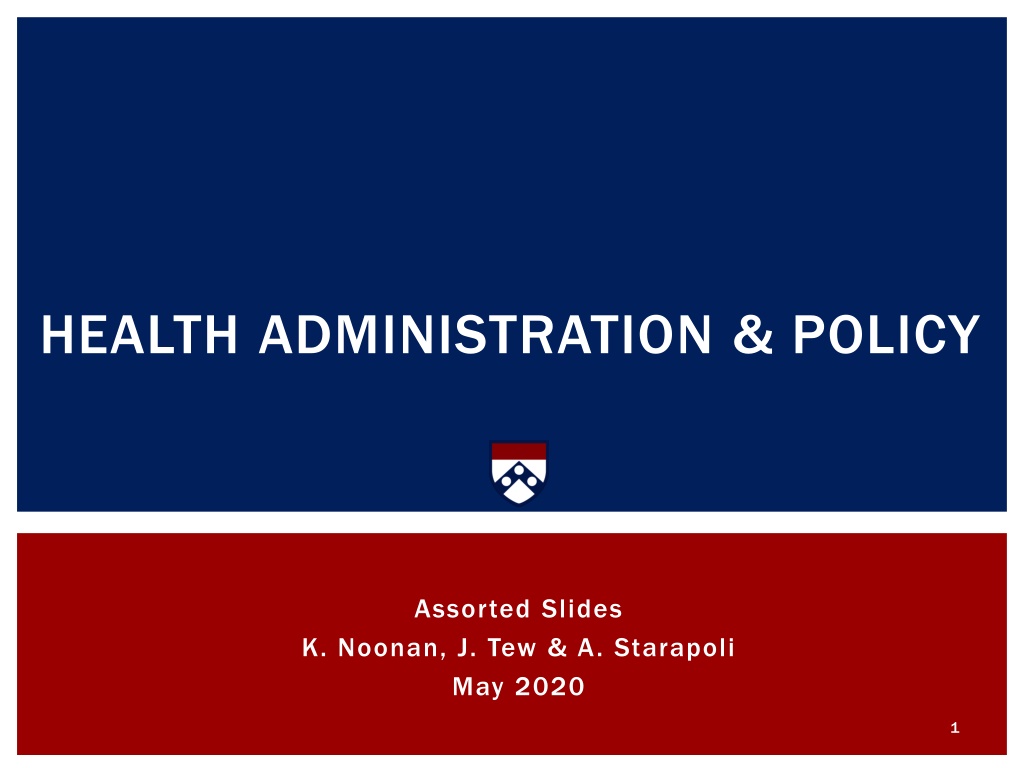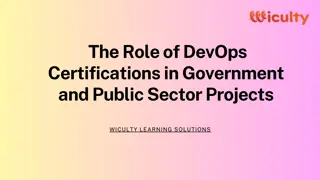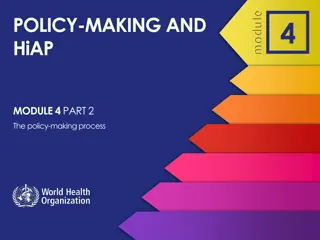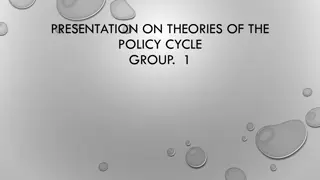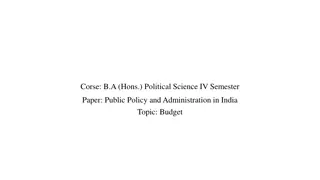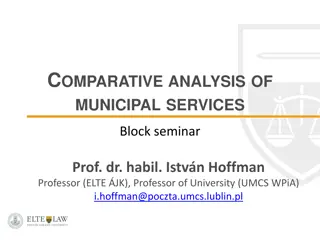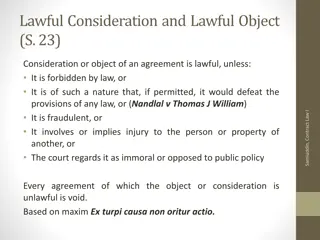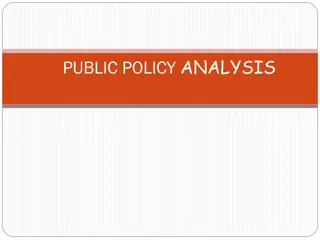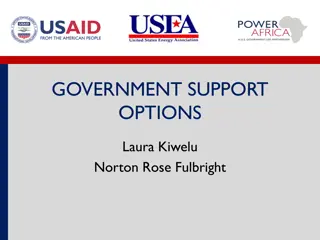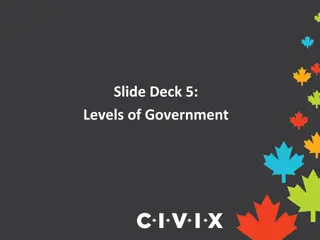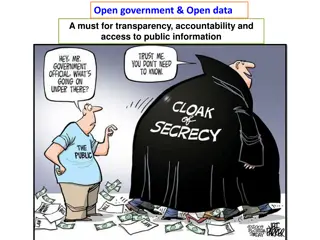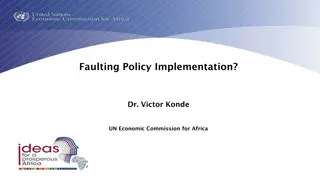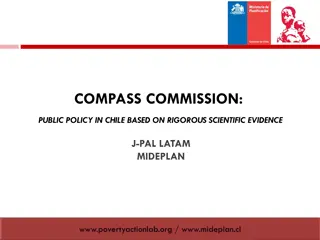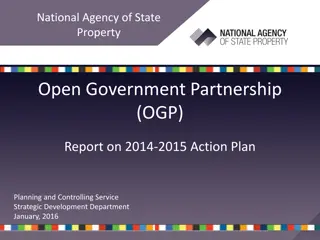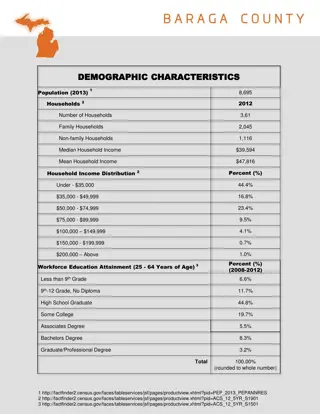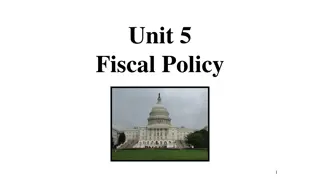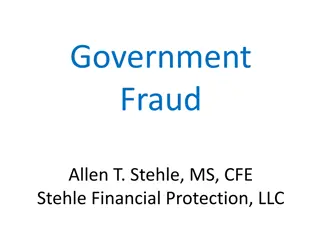Overview of Public Policy and Government Structure
An exploration of public policy, including its definition, components, and implementation at various levels of government. The slides cover the concept of public problems, the role of different branches of government in policy-making and enforcement, and the legislative process involved in enacting laws.
Download Presentation

Please find below an Image/Link to download the presentation.
The content on the website is provided AS IS for your information and personal use only. It may not be sold, licensed, or shared on other websites without obtaining consent from the author. Download presentation by click this link. If you encounter any issues during the download, it is possible that the publisher has removed the file from their server.
E N D
Presentation Transcript
HEALTH ADMINISTRATION & POLICY Assorted Slides K. Noonan, J. Tew & A. Starapoli May 2020 1
WHAT IS PUBLIC POLICY? What is public policy? A government resolution to a public problem What constitutes a public problem? Public problems are conditions that the public feels are unacceptable and require intervention Could be policy problem, could be public health problem Where does public policy occur? At all levels of government Within different government institutions Question: What is private policy? 2
REVIEW: FEDERAL, STATE AND LOCAL GOVT Federal Government Local Government State Government Creates laws (i.e., statutes), pass budget, monitor programs Creates laws (i.e., statutes), pass budget, monitor programs Legislative Branch (U.S. Congress) Creates laws (i.e. ordinances), pass budget, monitor programs Legislative Branch (PA General Assembly) Legislative Branch (Philly City Council) Enforce laws, implement programs Adopt rules and regulations Executive Branch (Philly Mayor, Philly DoH, BoH) Enforce laws, implement programs Adopt rules and regulations Enforce laws, implement programs Adopt rules and regulations Executive Branch (PA Governor, PA DoH) Executive Branch (POTUS, HHS) Judicial Branch (Philly Municipal Court) Judicial Branch (PA Unified Court System) Interpret laws, regulations and other rules, , resolve conflicts Interpret laws, regulations and other rules, , resolve conflicts Interpret laws, regulations and other rules, resolve conflicts Judicial Branch (SCOTUS) 3
REVIEW: LEGISLATIVE POLICYMAKING FLOOR ACTION FLOOR ACTION INTRODUCTION INTRODUCTION COMMITTEE ACTION COMMITTEE ACTION ENACTMENT INTO ENACTMENT INTO LAW LAW Referred to House Referred to House committee, which committee, which holds hearings and holds hearings and recommends recommends passage passage Bill Introduced Bill Introduced in House in House House debates House debates and passes and passes House and Senate House and Senate members confer, members confer, reach compromise reach compromise on all differences on all differences between the two between the two versions versions Much legislation Much legislation begins as similar begins as similar proposals in both proposals in both houses houses House and House and Senate approve Senate approve compromise compromise President signs President signs into law into law All bills must be All bills must be approved by the House approved by the House and Senate in identical and Senate in identical form before they can form before they can be sent to the be sent to the President President Referred to Senate Referred to Senate committee, which committee, which holds hearings holds hearings and recommends and recommends passage passage Bill Introduced Bill Introduced in Senate in Senate Senate debates Senate debates and passes and passes 4
ADMINISTRATIVE POLICYMAKING IS ALSO VERY IMPORTANT Policymaking that occurs by non-elected employees of government agencies Different mechanisms: Rules, guidance, other gray policy Administrative Policy vs. Legislative Policy Shadow 4th branch of government 5
ALWAYS MULTIPLE STAKEHOLDERS IN POLICY & ADVOCACY WORK Government/Agencies Federal, state, city Providers Employers/Unions Insurance/Payers Communities/Neighborhoods Families/Consumers Foundations Media Advocacy Groups 6
POLICYMAKING INVOLVES CONSIDERING MULTIPLE OPTIONS Essential elements of the analysis Issue Statement/Problem Statement Background on Issue/Landscape (players) Options (never consider options until you have the correct problem statement) Recommendation 7
IDENTIFYING OPTIONS Consider typical policy actions Gov t providing or purchasing a good for public Taxing or subsidizing to achieve outcome Passing laws and regulations to require action Education and information to persuade action Always consider the status quo Identify 3 to 5 best suited alternatives GO BACK TO PROBLEM to make sure options squarely address problem 8
